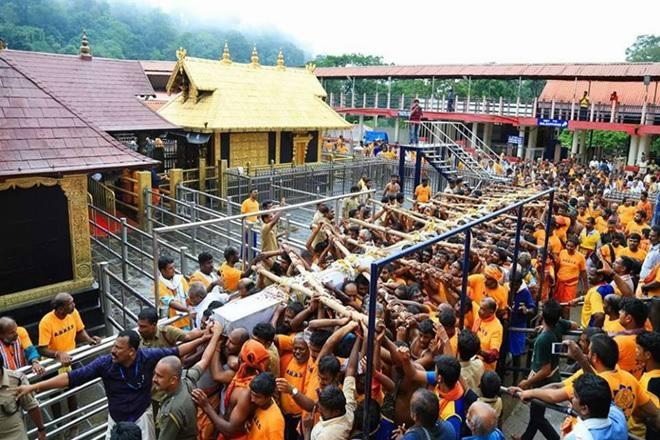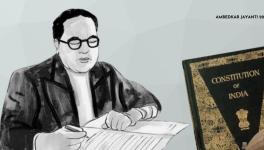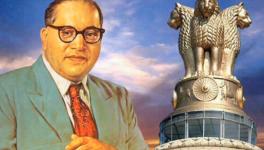Has Supreme Court Caved in to Hindutva?

The Supreme Court’s majority decision to club the issue of women’s entry into the Sabarimala temple with pending matters of similar nature and refer all these to a larger, seven-member bench for consideration echoes, even though subliminally, the Hindu Right’s arguments and cribs against religious reforms.
These pending matters include whether Muslim women can enter a mosque/dargah (mausoleum), whether Parsi women married to non-Parsis are allowed to go into a fire temple, and whether the practice of female genital mutilation in the Dawoodi Bohra community should be banned.
Justice RF Nariman and Justice DY Chandrachud dissented with the majority opinion. Their argument was that the pending matters were not raised in over 50 petitions requesting the Supreme Court to review its 2018 judgement on the Sabarimala temple, which allowed entry to women of all ages.
The Supreme Court’s decision to group together myriad matters pertaining to religious reforms addresses the fundamental crib of orthodox Hindu leaders—that the Indian state’s zeal to reform their religious customs and practices does not extend to those of religious minorities.
The duality of approach to reform, according to orthodox Hindu leaders, is because of the Westernised elite’s grip over the Indian state. Neither steeped in the Hindu tradition nor religious, they seek to reform Hindus regardless of their sentiments. In contrast, religious minorities are not subjected to the elite’s modernising project.
This line of argument surfaced during the ferocious debate over the Hindu Code Bill in the 1940s, and then after India’s Independence. It became an article of faith for the Hindu Right when the Congress government, in 1985-86, overturned the Supreme Court judgement ordering that Shah Bano, a Muslim, was entitled to maintenance allowance from her husband who had divorced her.
As recently as last year, Rashtriya Swayamsevak Sangh chief Mohan Bhagwat referred to the ‘duality’ of approach to reform in his customary Vijaya Dashami speech.
Referring to the unrest triggered by the Supreme Court’s judgement allowing women of all ages to enter the Sabarimala temple, Bhagwat said, “The questions such as why only the Hindu society experiences such repeated and brazen onslaughts on its faith, obviously rise in the public mind and lead to unrest. The situation is not at all conducive for the peace and healthiness of the society.”
By clubbing the issue of gender-based exclusion of Hindu, Muslim and Parsi women from their places of worship, the Supreme Court seems to have heeded Bhagwat’s criticism. The future ruling of the seven-member bench could always have a different bearing on each of the three religious groups.
Yet the Supreme Court will be simultaneously examining the tenets of Hinduism, Islam and Zoroastrianism. This is a significant victory for the Hindu Right. Its ideology now frames the dispensing of justice and conduct of politics.
The grievance of orthodox Hindu leaders that only their religion is singled out for reform, dates back to 1941, when the Hindu Law Committee, under Justice BN Rau, was appointed to modernise Hindu laws that govern marriage and inheritance. On the basis of its report, a Hindu Code Bill, in two parts, was prepared and circulated for discussion. The first part of the Bill, dealing with succession, was said to have been framed by Sir Sultan Ahmed and was introduced in 1943 in the Central Legislative Assembly.
Orthodox Hindu leaders were severe in their criticism of the Bill. Among those leading the charge against it was the Gita Press, which represented the worldview of the Hindu Right. Journalist and independent researcher, Akshaya Mukul, in his book, Gita Press and the Making of Hindu India, writes, “Gita Press realised that its arguments against the Hindu Code Bill would have even greater resonance in the orthodox world if they were articulated through the Hindu-Muslim prism...”
Thus, the provision in the Bill giving a daughter the right to inherit her father’s property, was projected as an instance of imposing Muslim law on the Hindus. “Since the bill is the brainwave of Sir Sultan Ahmed it is natural such a provision has been made,” wrote Kalyan, a Gita Press publication. “The battle between bhai-bhai (brothers) would now become a battle between bhai-behen (brother and sister). Daughters would get rights from their fathers but would have to give away similar right to their nanads (husband’s sister)… The peace and tranquility of our homes would be gone.”
The Bill, however, lapsed and was subsequently reintroduced in the Constituent Assembly. It was referred to a Select Committee under the chairmanship of Law Minister BR Ambedkar. The Select Committee’s report was discussed in the Constituent Assembly, where the Hindu Right now changed the tack of its attacks. From projecting the Bill as a Muslim conspiracy, its leaders now taunted the government that its zeal for secularism was confined to reforming Hindu laws and interfering in their religion.
Their line of criticism was palpable from the intervention of orthodox Hindu leaders, many of whom were in the Congress party. Outside the Assembly, the attack on the Bill was launched by the RSS, which, as Ramachandra Guha writes in his book, India After Gandhi, “They brought batches of volunteers into New Delhi, to shout slogans against the Hindu Code Bill and court arrest. Among their larger aims were the dismemberment of Pakistan and the unseating of Jawaharlal Nehru [as prime minister’—as they shouted, ‘Pakistan tod do’, ‘Nehru hukumat chhod do’ [Break Pakistan, Nehru quit ruling].”
Academician Chitra Sinha in her paper, ‘Rhetoric, Reason and Representation: Four Narratives in the Hindu Code Bill’, cites the Hindu Mahasabha’s Chennai wing describing the Hindu Code Bill as a “suicidal folly”. Why? This was because, the Mahasabha argued, the new Hindu code “based on monogamy may get the credit of having converted the whole of India into a vast Pakistan where the surviving Hindus will be treated as strangers in their own fatherland.”
In the Constituent Assembly, the Hindu Right was not quite as illogical. Its preferred mode of attack was to wonder why the Hindus were being reformed, not other religious communities. They were not convinced by the government’s explanation that a secular India, with an overwhelming Hindu majority, will not interfere in the religious affairs of religious minorities.
For instance, Seth Govind Das, a Hindu Right leader in the Congress, told the Constituent Assembly, “Today when we call our country a ‘secular state’ …Dr Ambedkar should have presented to this House such a Bill which would have concerned not the Hindus alone, but would have been made applicable to all citizens of this country. While admitting this country as a ‘secular state’, the idea of introducing a Hindu Code Bill seems to me quite inappropriate.”
The government had not brought in a universal civil code because it did not dare to touch the Muslims, said Pandit Lakshmi Kanta Maitra, who had been elected from West Bengal. “But you know that Hindu society today is in such a bad way that you can venture to do anything with it. Only a few ultra-modern persons, who are vocal, but have no real support in the country, are interested in this Bill,” he said.
Maitra also thought the Bill reeked of “un-Hindu ideas: a spirit of supreme contempt for anything Hindu permeates the whole Bill from the beginning to end.”
The remarks of HV Pataskar, who was awarded the Padma Vibhushan in 1963, sounded as paranoid as that of an RSS pracharak (propagandist) today. A uniform code would have taken away certain privileges that Muslims enjoy because of their personal law. Pataskar said, “By the present Bill also you are giving the exclusive right to a Muslim to have as many wives as he likes or at any rate up to four. Now what happens, if a man—a very wealthy man—wants to marry another wife, he can get himself converted into a Muslim and he can have as many wives as he likes.”
Then there was Gokulbhai Daulatram Bhatt, awarded the Padma Bhushan in 1971, who said, “I must say that it is the Hindu community alone which would quietly take whatever blows you might give it. Look at the Muslim community. Did anyone have the courage to draw up a code for them? Why not unite the Shia and Sunni schools of thought? Could you just dare meddle with the law of the Christians? Or could you dare tackle the Parsis? This poor community alone must stand everything.”
Bhatt said the Bill was an outcome of Ambedkar’s inferiority complex.
Ambedkar, however, saw the demand for a uniform code as a strategy to sabotage the Hindu Code Bill. Guha writes, “As Dr Ambedkar put it, ‘those who until yesterday were the greatest opponents of this [Hindu] Code and the greatest champions of the archaic Hindu Law as it exists today’, now claimed that they were ‘prepared for an All-India Civil Code.’ This was because they hoped that while it had already taken ‘four or five years to draft the Hindu Code it will probably take ten years to draft the Civil Code.”
In clubbing the religious issues of Hindus, Muslims and Parsis, RSS leader Bhagwat cannot crib or wonder why “only the Hindu society experiences such repeated and brazen onslaughts on its symbols of faith.”
For the public, though, the Supreme Court’s majority decision in the Sabarimala case will seem a testament to the judges succumbing to pressure from Hindutva forces.
Ajaz Ashraf is a freelance journalist. The views are personal.
Get the latest reports & analysis with people's perspective on Protests, movements & deep analytical videos, discussions of the current affairs in your Telegram app. Subscribe to NewsClick's Telegram channel & get Real-Time updates on stories, as they get published on our website.
























